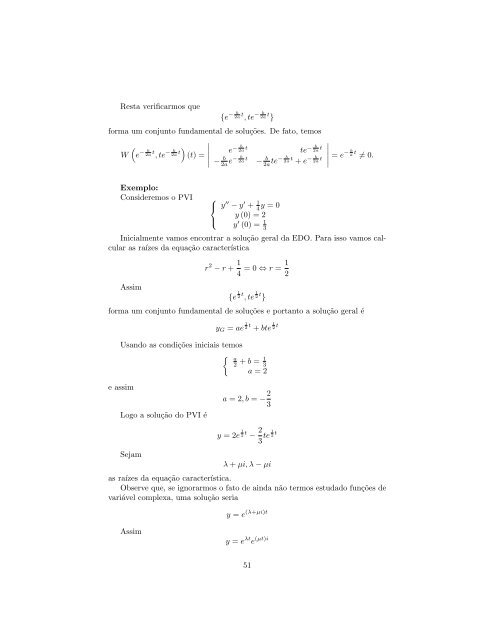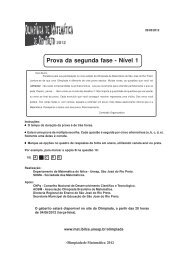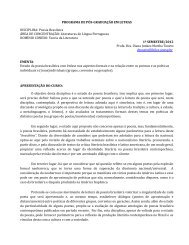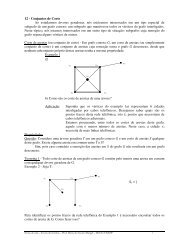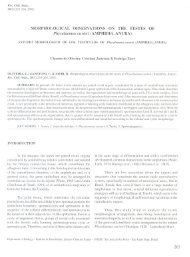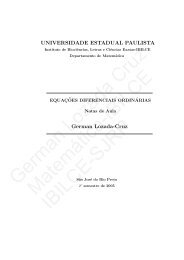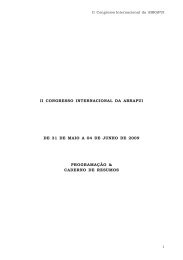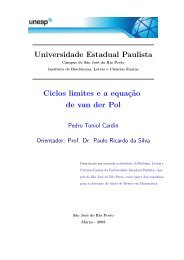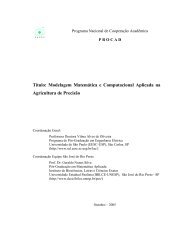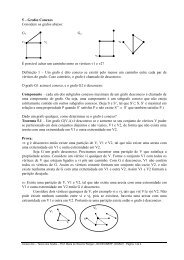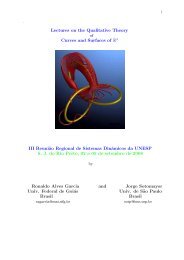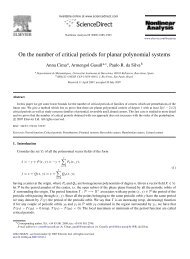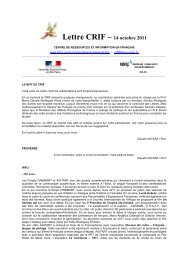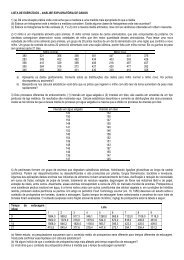Curso de Equações Diferenciais Ordinárias - Unesp
Curso de Equações Diferenciais Ordinárias - Unesp
Curso de Equações Diferenciais Ordinárias - Unesp
You also want an ePaper? Increase the reach of your titles
YUMPU automatically turns print PDFs into web optimized ePapers that Google loves.
Resta verificarmos que<br />
{e − b<br />
2a t , te − b<br />
2a t }<br />
forma um conjunto fundamental <strong>de</strong> soluções. De fato, temos<br />
∣<br />
(<br />
W e − b<br />
2a t , te − b t) e<br />
2a (t) =<br />
− b<br />
2a t<br />
te − b<br />
2a t ∣∣∣∣ ∣ − b<br />
2a e− b<br />
2a t − b<br />
2a te− b<br />
2a t + e − b<br />
2a t = e − b a t ≠ 0.<br />
Exemplo:<br />
Consi<strong>de</strong>remos o PVI ⎧<br />
⎨ y ′′ − y ′ + 1 4 y = 0<br />
y (0) = 2<br />
⎩<br />
y ′ (0) = 1 3<br />
Inicialmente vamos encontrar a solução geral da EDO. Para isso vamos calcular<br />
as raízes da equação característica<br />
Assim<br />
r 2 − r + 1 4 = 0 ⇔ r = 1 2<br />
{e 1 2 t , te 1 2 t }<br />
forma um conjunto fundamental <strong>de</strong> soluções e portanto a solução geral é<br />
y G = ae 1 2 t + bte 1 2 t<br />
Usando as condições iniciais temos<br />
{ a<br />
2 + b = 1 3<br />
a = 2<br />
e assim<br />
Logo a solução do PVI é<br />
Sejam<br />
a = 2, b = − 2 3<br />
y = 2e 1 2 t − 2 3 te 1 2 t<br />
λ + µi, λ − µi<br />
as raízes da equação característica.<br />
Observe que, se ignorarmos o fato <strong>de</strong> ainda não termos estudado funções <strong>de</strong><br />
variável complexa, uma solução seria<br />
y = e (λ+µi)t<br />
Assim<br />
y = e λt e (µt)i<br />
51


